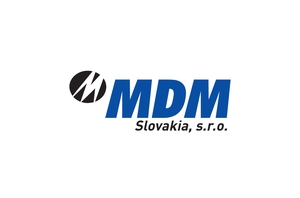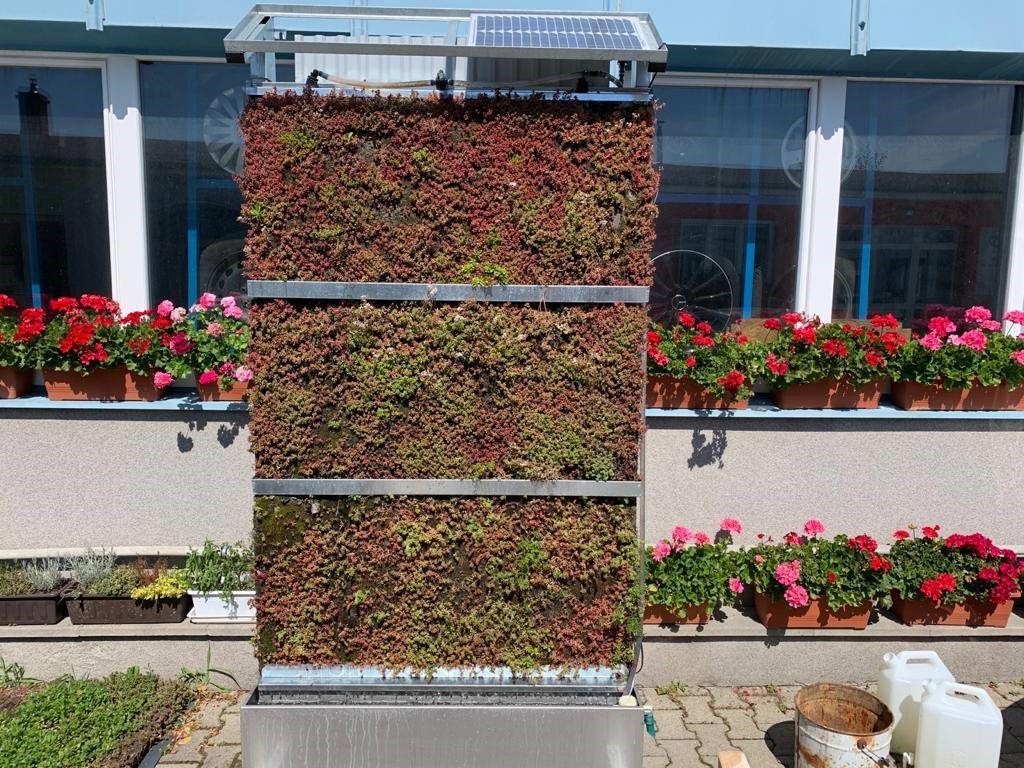Climatically and energetically active vegetation facade with an irrigated green wall

Address
MDM Slovakia, s.r.o.Nádražná 35
909 01 Skalica
IČO: 36 231 789
https://www.mdm.sk/
Contact person
Dušan Mareček0905714433
mdm@mdm.sk
View profile
Description
In 2015, MDM Slovakia, s. r. o. began to engage with vegetative water retention surfaces more intensely. The climatically and energetically active vegetation facade (KEAVF) with an irrigated green wall is a pre-planted steel frame that usually stands on its base and is anchored to an existing facade.
A trapezoidal sheet and pre-grown boards made of the patented STERED material are attached to a steel frame and covered by moss and stonecrops. Rainwater from retention tanks or greywater - water from water purification facilities - can be used to irrigate the wall. The wall is then able to hold water and gradually evaporate it. Excess water flows back into the retention tank from which it is re-drawn to the top of the wall. Thanks to the gradual pumping of water at temporal intervals depending on weather, the wall becomes an energetic cooler that prevents the overheating of buildings and the emergence of heat islands. It can save up to 25% of energy for cooling; it also absorbs dust, contributes to a significant reduction of noise spread from interior to exterior, and supports local biodiversity. The wall is nearly maintenance-free. Using the energetically active vegetation wall made of the STERED material as a green wall significantly increases buildings' energy efficiency and reduces greenhouse gas emissions.
Economic benefits
With its simple construction using the properties of STERED boards, it can save money during the construction and subsequent operation of the KEAVF. By simply irrigating with either water from retention tanks or grey water from the WWTP, the vegetated façade can save up to 25% of the energy used to produce cooling. The wall is almost maintenance-free.
Environmental benefits
KEAVF is made of steel and recycled patented STERED material, which, when used as building cladding, contributes significantly to increasing the energy efficiency of buildings and reducing greenhouse gas emissions. In addition, it creates a pleasantly cooler environment around the halls, prevents the formation of heat islands, promotes biodiversity and also contributes to a significant reduction in noise propagation from the interior to the exterior and vice versa.




